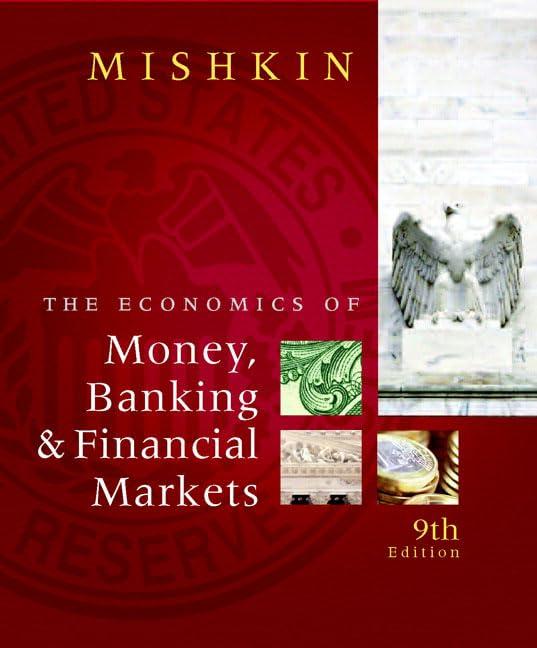Answered step by step
Verified Expert Solution
Question
1 Approved Answer
1. Consider a country with n > 3 citizens, where n is odd. Suppose that the preferences of citizen i over a public good 9

1. Consider a country with n > 3 citizens, where n is odd. Suppose that the preferences of citizen i over a public good 9 (0.1) and a private good G (0,11 are characterized by the utility function 14=4 +avy. where a, 10,1] denotes how much citizen i values the public good. Let AVG be the average and amed be the median of the distribution of valuations, Assume, in addition, that each citizen i has initial resources in private good ri = 1, and that one unit of private good is necessary to produce one unit of public good. Last, suppose that to finance the production of the public good, the government raises a taxt (0.1) on each citizen so that the budget constraint of citizen iis Sri-t and the budget constraint of the government is g Snt. (a) What is the preferred tax t*(a) of each citizen ? Describe how t(a) changes with a (e.g., increases, decreases, non-monotonic). (b) What is the socially optimal tax tOPT that maximises the average utility UAVG? (c) Consider a two-party competition where each party proposes a different value of t to win the election. Under majority rule, what is the equilibrium tax (preferred tax) FIQ? Compare this to the social optimum. When does OPT coincide with EQ? (a) Suppose now each agent's preferences are given by Uy = 4+ (a, - for some given fixed value of . Show whether preferences are single peaked or not. Does Median Voter Theorem apply to find the equilibrium tax rate? Explain why or why not. How does your answer to (e) change? 1. Consider a country with n > 3 citizens, where n is odd. Suppose that the preferences of citizen i over a public good 9 (0.1) and a private good G (0,11 are characterized by the utility function 14=4 +avy. where a, 10,1] denotes how much citizen i values the public good. Let AVG be the average and amed be the median of the distribution of valuations, Assume, in addition, that each citizen i has initial resources in private good ri = 1, and that one unit of private good is necessary to produce one unit of public good. Last, suppose that to finance the production of the public good, the government raises a taxt (0.1) on each citizen so that the budget constraint of citizen iis Sri-t and the budget constraint of the government is g Snt. (a) What is the preferred tax t*(a) of each citizen ? Describe how t(a) changes with a (e.g., increases, decreases, non-monotonic). (b) What is the socially optimal tax tOPT that maximises the average utility UAVG? (c) Consider a two-party competition where each party proposes a different value of t to win the election. Under majority rule, what is the equilibrium tax (preferred tax) FIQ? Compare this to the social optimum. When does OPT coincide with EQ? (a) Suppose now each agent's preferences are given by Uy = 4+ (a, - for some given fixed value of . Show whether preferences are single peaked or not. Does Median Voter Theorem apply to find the equilibrium tax rate? Explain why or why not. How does your answer to (e) change
Step by Step Solution
There are 3 Steps involved in it
Step: 1

Get Instant Access to Expert-Tailored Solutions
See step-by-step solutions with expert insights and AI powered tools for academic success
Step: 2

Step: 3

Ace Your Homework with AI
Get the answers you need in no time with our AI-driven, step-by-step assistance
Get Started


